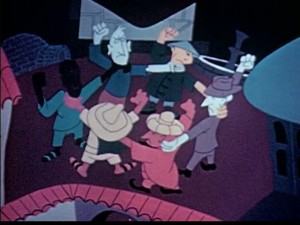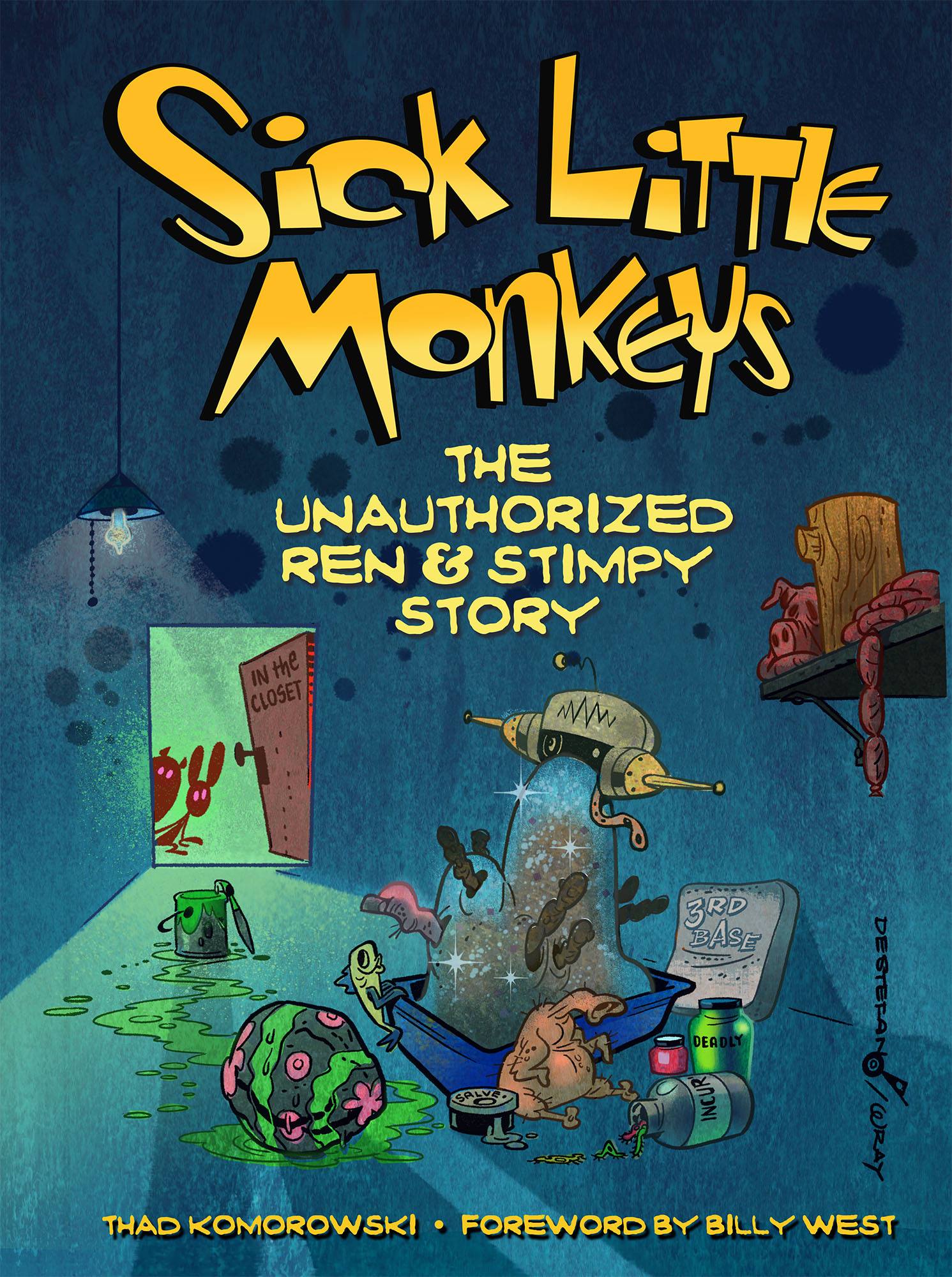If there’s one good thing about the preponderance of UPA discussions in animation circles, it’s that more and more previously neglected films are beginning to emerge from their hidey-holes in various archives.
The Prelinger Archives have uploaded a decent copy of the seminal UPA cartoon The Brotherhood of Man, directed by Bobe Cannon, written by John Hubley, and featuring animation by WB heavyweights Ken Harris and Ben Washam. I have been an admirer of this film for years for its elegant use of design and progressive story, and this is the first time I’ve seen it in presentable condition.
Cannon and Hubley handled this material with admirable sophistication without resorting to the heavy-handed condescension that sadly plagues a large amount of UPA’s output in the 1950s. I have to wonder, though, if Brotherhood was baffling to the majority of the general public in 1946. Unlike UPA’s later attempts at introducing themes and ideas that were and are universally inaccessible (the condescendingly bourgeois Fudget’s Budget immediately comes to mind), the ideas present in Brotherhood are ones any member of civilized society might take for granted as common sense. They took awhile to become ingrained as such in the average person’s mindset, and the fact that a newspaper (unidentified in Adam Abraham’s book) could call it “as funny as a Bugs Bunny” seems to be evidence that audiences may have been missing the point.
This transfer looks like it’s sourced from a 16mm Kodachrome print or similar early low-fade stock. The quality is not ideal, but it’s certainly leagues ahead of the black-and-white and faded 16s I’ve seen of this title over the years. Until a 35mm low-fade of it emerges, this is probably the best copy we’ll see of the cartoon. You can download it at this link.
On the other end of the spectrum, Jerry Beck tells us that The Sailor and the Seagull, a rare 1949 Navy reenlistment film, was restored by the National Archives and Records Administration.
The majority of commenters swooned over the sheer richness of the color and the appealing designs/animation, most of it owing more to an obvious Chuck Jones influence than to UPA’s own innovation. A commenter on Jerry’s post, only identified as “tak”, was not so easily taken and had this to say: “Man, mundane propaganda films about life in or out of institutions or public service are probably the scariest propaganda films of them all.”
Couldn’t have said it better myself. UPA was one of two major animation studios that heavily specialized in these non-theatrical ‘infotainment’ pictures. The other was of course Disney. Is it any surprise that both were the studios that most frequently went out of their way to please themselves rather than the audience in their theatrical shorts?
The preservationist in me is loudest: there’s no question that every film should be preserved, and that some historical value will always be present (Seagull is one of the first cartoons to feature voice artist Daws Butler). But the critic in me is trying to figure out how to tactfully say, “Most of this stuff went missing for a reason.” It’s the same in all genres of film. You might find a gem like Cockatoos for Two, but most ‘lost’ films tend to be more like Kitty Caddy. Allah praise those with more resolve than me (I’m talkin’ to you, Stathes!)



If Chuck Jones instead on Michael Maltese had been the one to go to Walter Lantz in the early 1950s, “Seagull” is what a Chuck Jones cartoon for Universal-International would have looked like….
…which still makes it better than almost all of the final years of UPA’s theatrical efforts. It’s peddling a forced message on behalf of the U.S. government, but it’s not peddling the hubris that UPA’s work suffered from, once the highbrow critics had declared the studio’s work the best thing since animated sliced bread. It’s harder to be pretentious when you can’t sell your ‘style’ as something the audience should be grateful to receive, and actually have to try and give the viewers a little entertainment to keep their attention (and get future work contracts).
I’m glad you brought up the seagull cartoon on your blog, Thad, but I had no idea that a better print of “The Brotherhood of Man” had come out recently too! I was impressed by how well they restored the former cartoon and how it almost looked like a DVD print. The Pat Matthews animation on that film is the best part about watching it besides for the background and layout designs, but they really could have done much more to make the cartoon itself funny and pales in comparison to Chuck Jones’ “So Much for So Little.”
Actually, the John Sutherland studio was likewise industrial and likewise pretentious. ^^ I’m a little scared to learn what would happen if, say, Damien Hirst started to want to please himself with his art. The sheer shittiness inherent would implode the earth itself.
The new print is awesome – the fact that you can see the colour in it. Even bad colour is preferable to having the colour that the filmmakers planned for unfairly leeched out. There’s also such clarity in the linework, with little thinning…
And the ‘Sailor’ film is a perfect example of demonstrating that when full animation is needed, nothing else does the job quite the same way. Bobe Cannon actually directed a film with full-type animation (Brotherhood)? That’s not a leap comparing it to his animation, with all the swoops and shit, but compared to his later theatrical output it’s unbelievable.
The one thing I liked about the seagull film is that it didn’t shy away from showing a dark side to the American dream (as a civilian) in a relateable way. Outside of that and a fun dream sequence it’s pretty ordinary and otherwise manipulative peace-time propaganda.